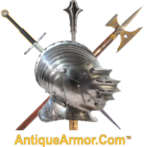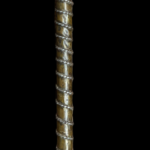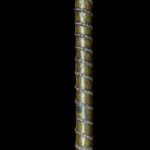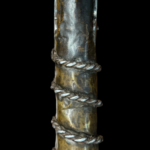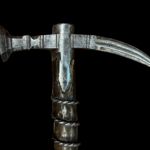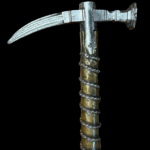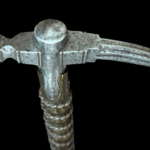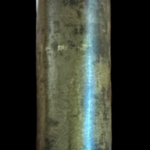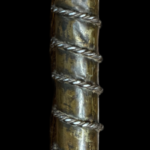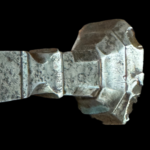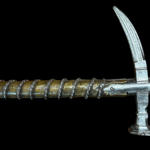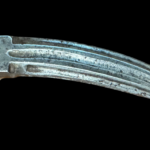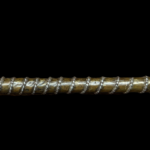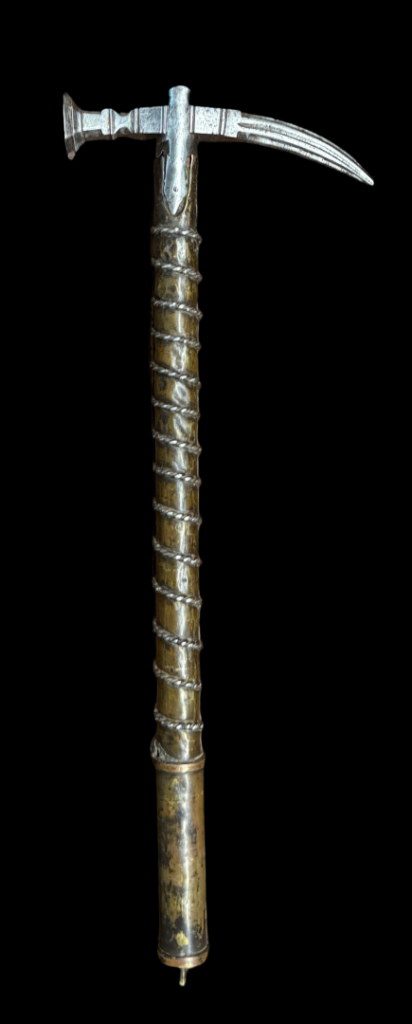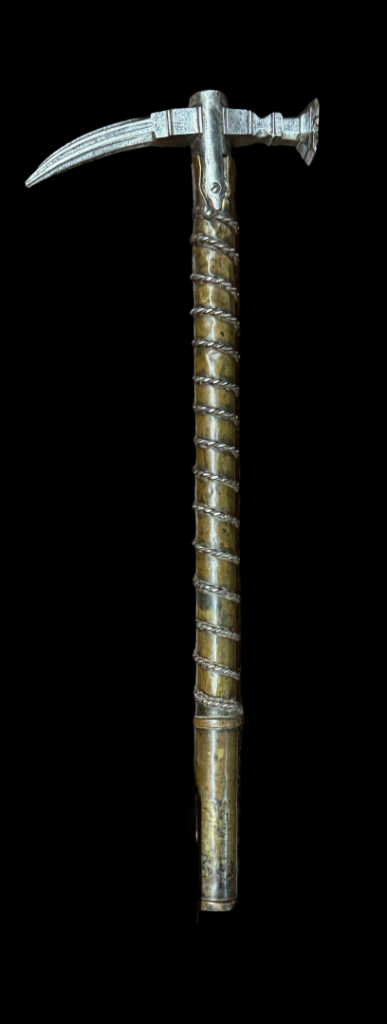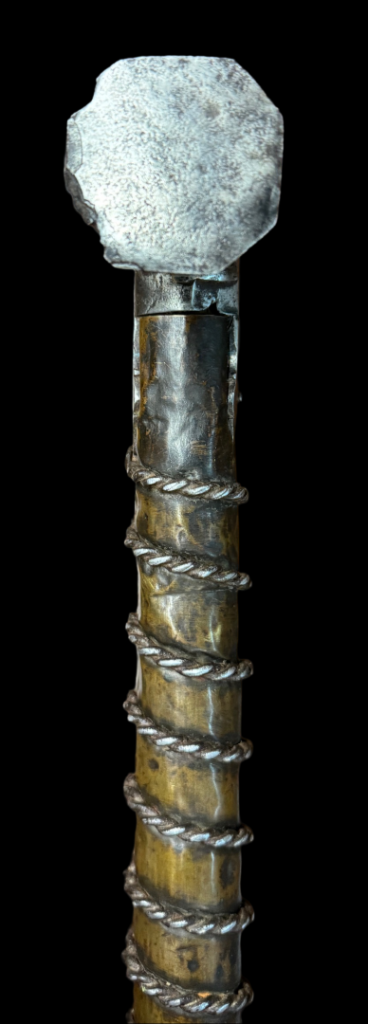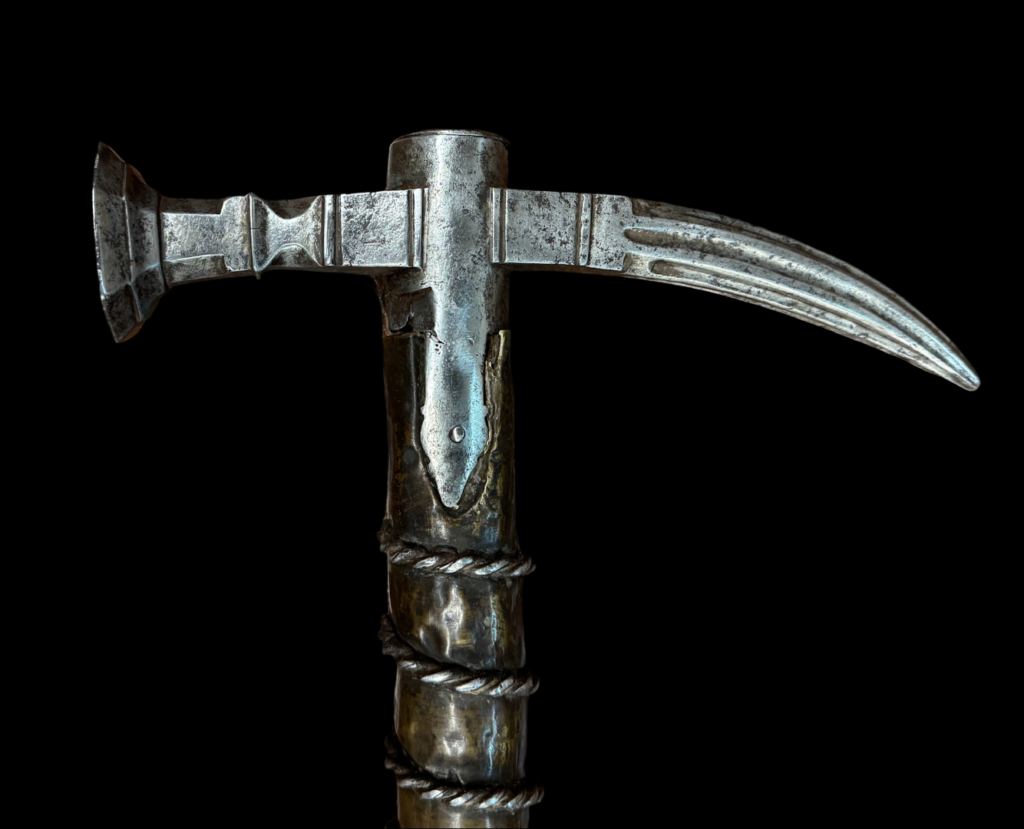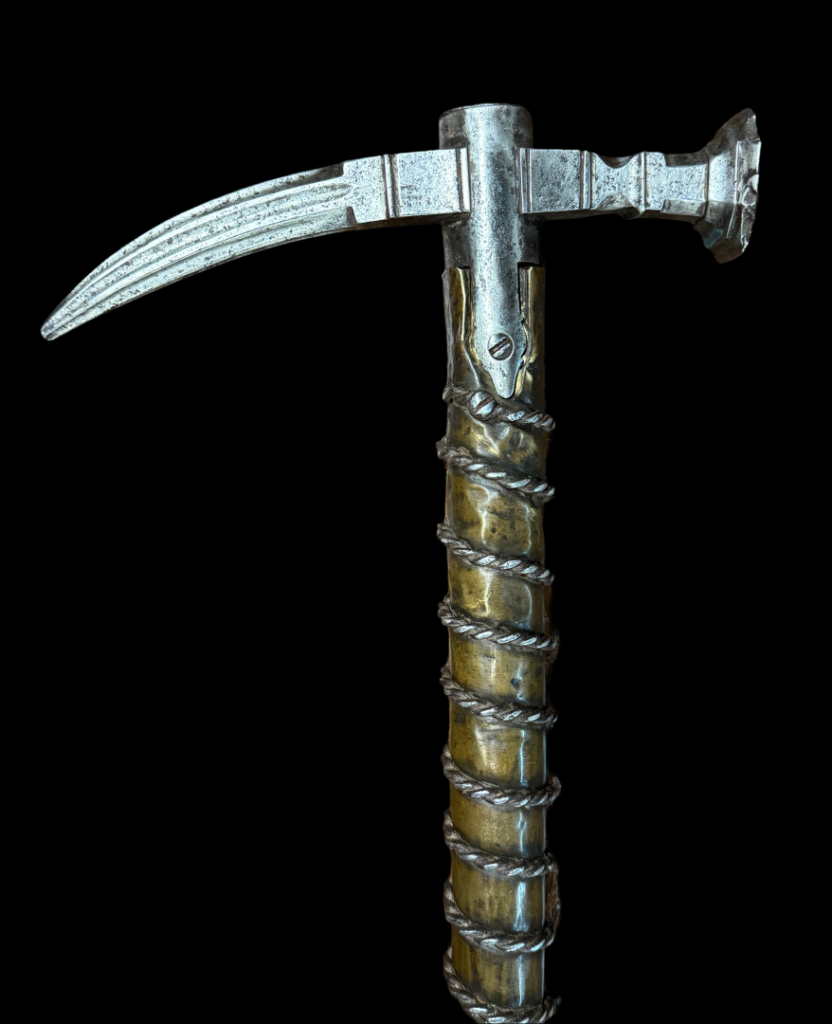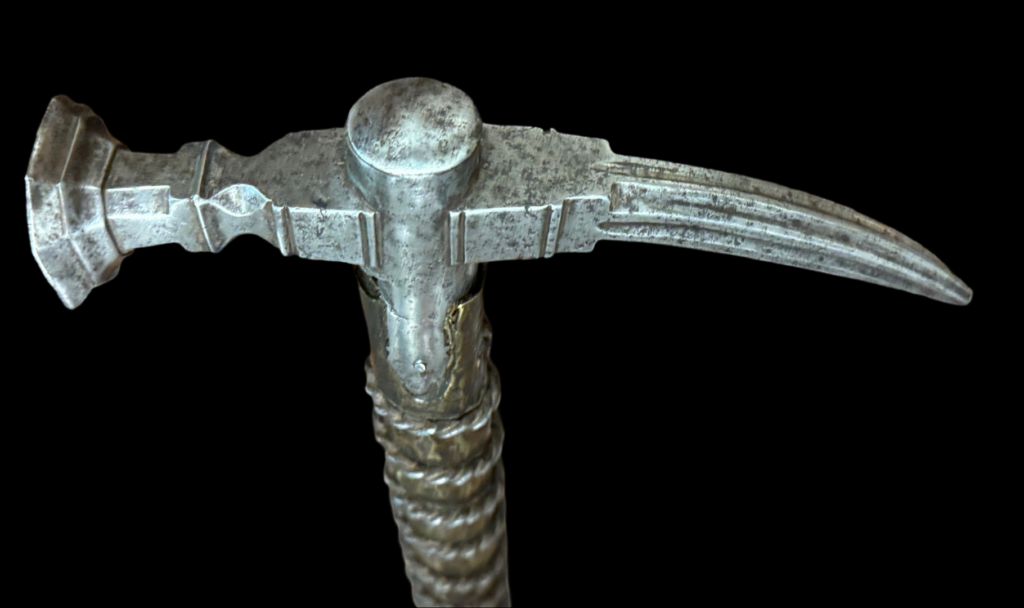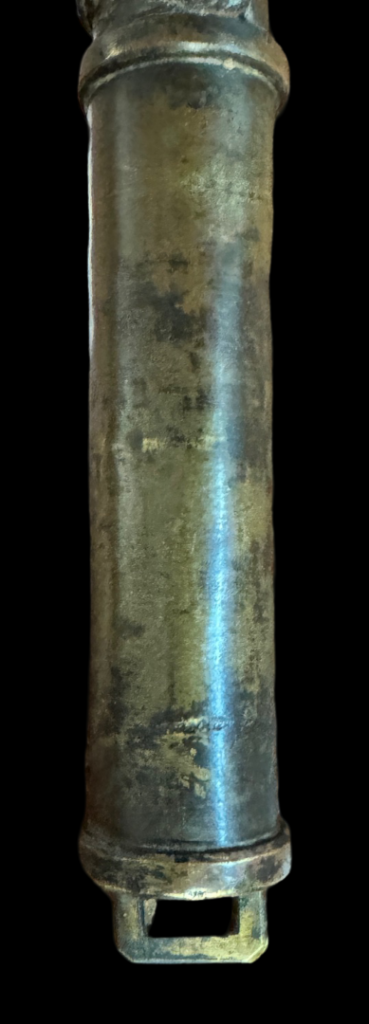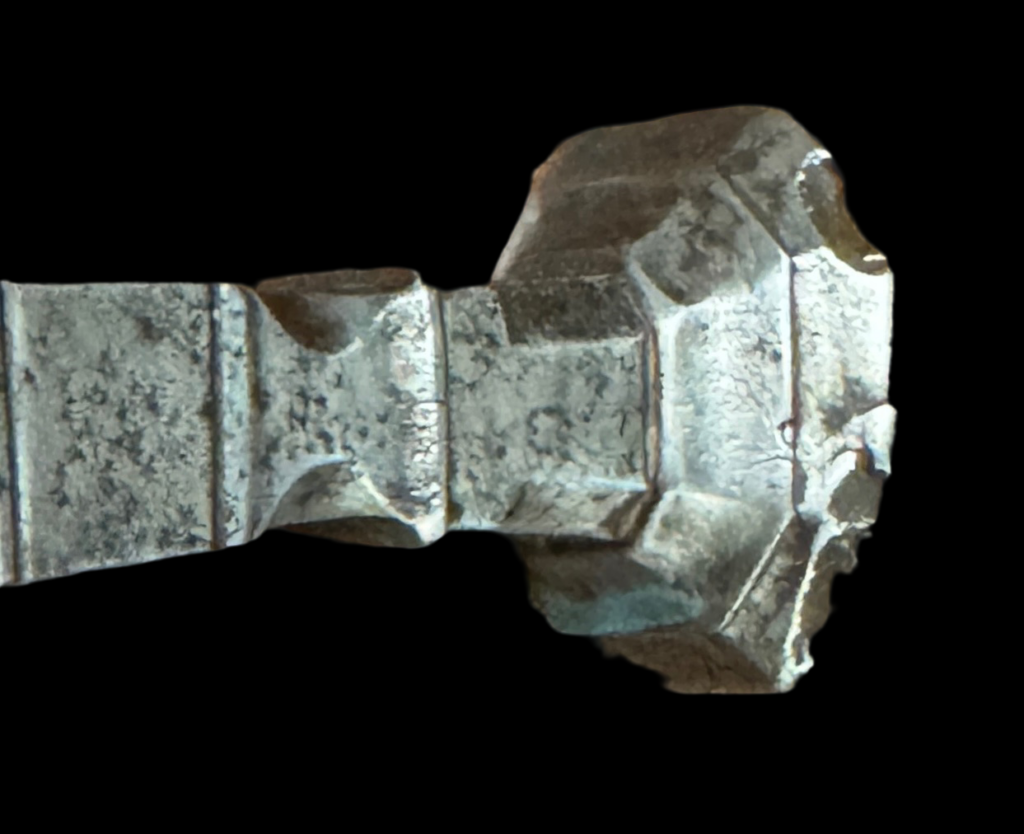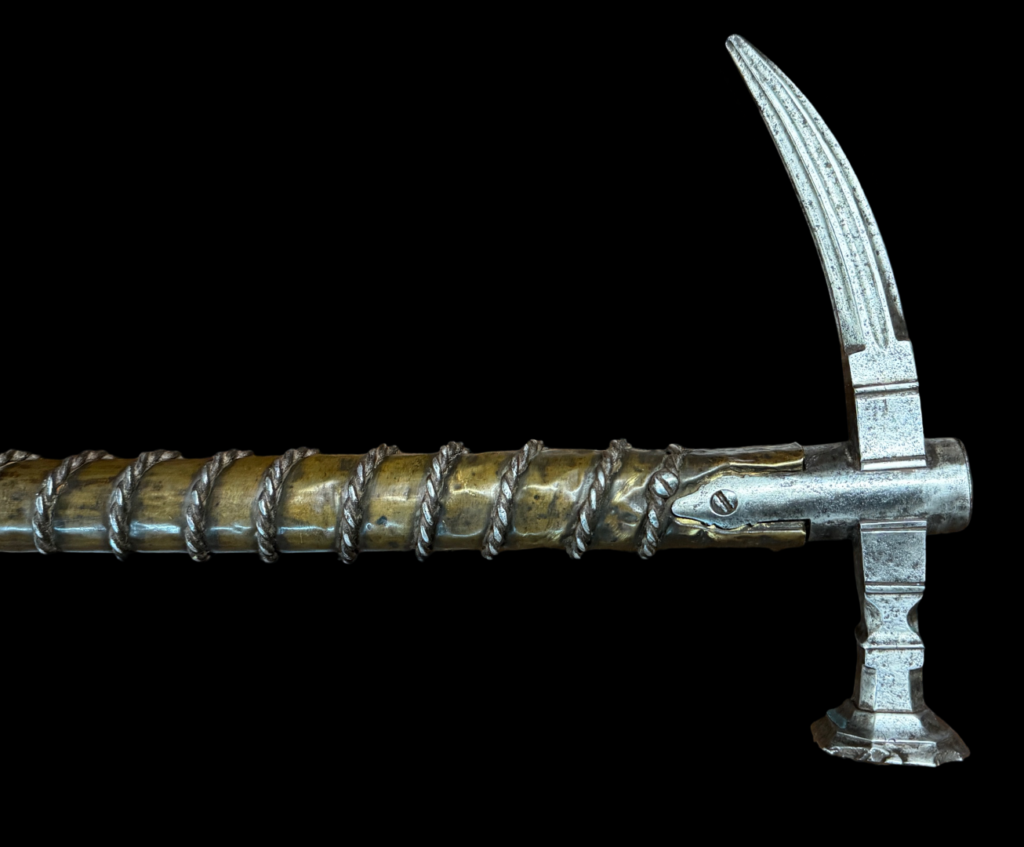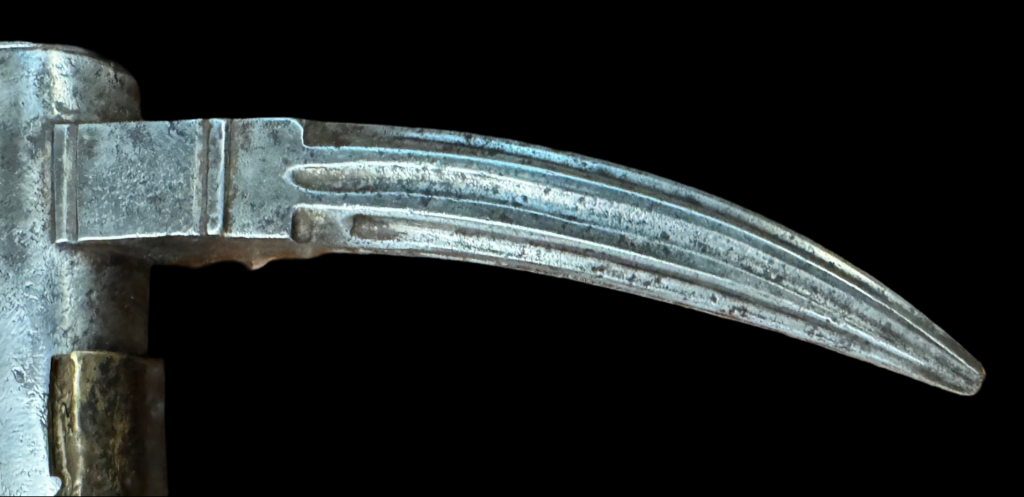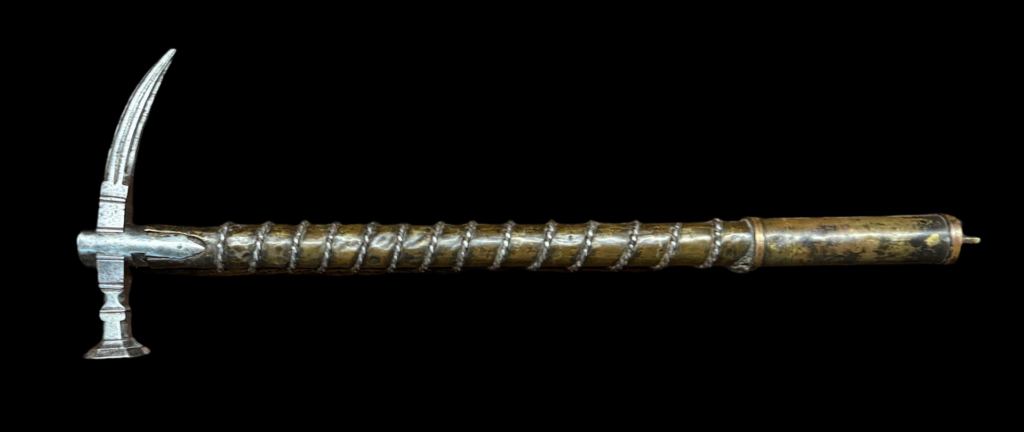1784) MUSEUM QUALITY RARE NADZIAK POLISH WAR HAMMER CIRCA 1650: A rare typology of Polish hammer closely associated with the Winged Hussars of Poland.
Discussion: The earliest example of a hammer combatant is in the manuscript illustration Alençon BM MS 96, which shows a judicial combat circa 1151-1200 with hammers and shields. The story of the war hammer and its variants is, in many ways, similar to the mace.
The war hammer is associated with warfare in the late Middle Ages. Like the mace, it developed in response to the growing strength of plate armor in the 14th and 15th centuries. As steel armor became more prevalent, other weapons, like swords, became less effective in battle. The impact inflicted by a war hammer could cause serious damage even without penetrating the armor. Probably the best example of the brutality that a war hammer can inflict is the Battle of Towton. The Battle of Towton was fought near the village of Towton in Yorkshire on Palm Sunday, March 29, 1461, during the English Civil Wars.
The decline of hammers, maces, and axes in Western Europe started as early as 1550. Up to 1550, Polish/Hungarian Knights, namely the Hussars, used the same hammers, maces, and axes as those used by Western Europe. After 1600, hammers, maces, and axes continued to be used widely in Central Europe, primarily Poland and Hungary, by both the cavalry and infantry. They remained in service up to as late as 1750.
Based on their decoration and construction, Polish/Hungarian hammers, maces, and axes were influenced by the East. This is further substantiated by their modified Turkish names, such as the hammer under discussion, called a “nadziak”. The continued use of hammers, maces, and axes for such a long time and also the changes to warfare strategies served as the catalyst to the evolution of unique Polish /Hungarian hammers, maces, and axes .
The nadziak is normally constructed with long, hard wooden hafts that often have metal caps at both the top and bottom or, as in this ultra rare example, the wood haft is covered in a metal wrapping sleeve. Other materials used to wrap hafts are leather or velvet.
Description: Constructed of a steel head, slightly downturned rear fluke of diamond section with eight gutters, projecting downwards from its base, octagonal face, pair of short straps or langets secured to the haft by screws. The wooden haft is covered with a tubular sleeve of copper alloy and wrapped in roped wiring. The grip separated from the haft by a rondel and a rondel pommel. Grip at the bottom with a retaining hook for a thong on the sleeve. Approximate dimensions: length 24.5 inches, width 8.8 inches.
Conclusion: A rare mace in superb condition, showing the true spirit of the Winged Hussar. This is the only
hammer of this type I have had in 40 years. For the collector looking for a unique conversation piece or true lover of early Polish military history. Priced to sell for a lot less than you would imagine !!!*
Contact Me To Get The Latest Lowest Price Possible From The Owner*
